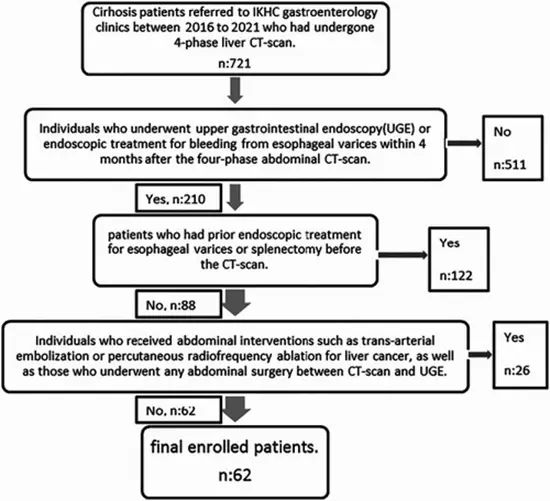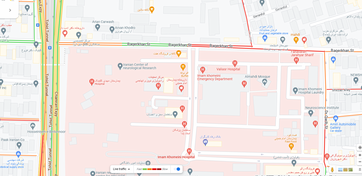Can Attenuation Subtraction, a Computed Tomography Scan-Based Factor, be Used as a Predictor of High-Risk Esophageal Varices in Cirrhotic Patients

Background and aims: Liver cirrhosis is a severe condition that can result in complications such as portal hypertension and esophageal varices (EVs). While current guidelines recommend screening for EVs, existing procedures are often invasive, costly, and occasionally unreliable. This study aims to develop a CT-based predictor for identifying high-risk esophageal varices group (HRG) in cirrhotic patients, offering a noninvasive, safe, and cost-effective alternative that integrates seamlessly into routine follow-up without requiring additional resources or time.
Methods: The study retrospectively analyzed data from 2016 to 2021 of cirrhotic patients referred to a hospital in Tehran. Experienced professionals analyzed factors related to CT scans, and patients were categorized into high-risk and non-high-risk varicose veins groups by endoscopy. The main sample size for the study was 62 patients with an average age of 50.2 ± 11.5 years. Also, we aimed to determine a diagnostic cutoff and externally validated it in a separate statistical population (29 patients).
Result: The study found that liver attenuation subtraction, Child-Pugh score, and direct visualization of esophageal varices in CT scans were significant factors in predicting high-risk esophageal varices. The study showed that a liver attenuation subtraction of 14.5 HU (CI 95%: 0.949-1) with an inverse relationship could predict high-risk esophageal varices with high accuracy.
Conclusion: The study indicated that liver "Attenuation Subtraction" in CT scans distinguishes high-risk and non-high-risk esophageal varices. Furthermore, external validation demonstrated that this cutoff value is generalizable to other statistical populations. We pinpoint an indicator of high-risk esophageal varices in patients with cirrhosis devoid of invasiveness and peril and do not impose supplementary expenses or time beyond the customary monitoring of cirrhotic patients.





ارسال نظر